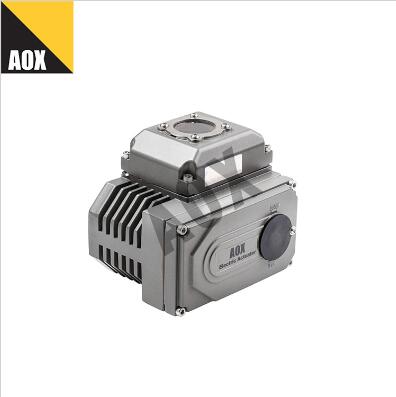Choosing the Right Unique Part Turn Electric Actuator: Key Considerations for Your Application
2024-03-08
Introduction:
Selecting the appropriate electric actuator is crucial for ensuring optimal performance and efficiency in industrial automation applications. When it comes to choosing a Unique Part Turn Electric Actuator for a specific application, several factors must be carefully considered to meet the unique requirements and challenges of the operation. In this blog post, we'll explore the key considerations that should guide the selection process for a Unique Part Turn Electric Actuator.
1. Torque and Load Requirements:
One of the first factors to consider when selecting a Unique Part Turn Electric Actuator is the torque and load requirements of the application. Determine the amount of torque needed to operate the valve, damper, or mechanism to ensure that the actuator can provide sufficient force to perform the required tasks effectively. Consider factors such as friction, resistance, and dynamic loads to accurately assess the torque requirements.
2. Rotation Angle and Speed:
The rotation angle and speed required for the application are essential parameters to consider when selecting a Unique Part Turn Electric Actuator. Determine the range of rotation needed for the actuator to perform its intended function, as well as the desired speed of operation. Ensure that the actuator can achieve the required rotation angle and speed within the specified time frame to meet the operational requirements of the application.
3. Environmental Conditions:
Consider the environmental conditions in which the Unique Part Turn Electric Actuator will operate. Factors such as temperature extremes, humidity levels, corrosive atmospheres, and exposure to dust or debris can impact the performance and longevity of the actuator. Choose an actuator with appropriate sealing, protection, and materials of construction to withstand the specific environmental challenges of the application.
4. Control and Communication Interfaces:
Evaluate the control and communication interfaces offered by the Unique Part Turn Electric Actuator to ensure compatibility with existing control systems and protocols. Determine whether the actuator supports common communication protocols such as Modbus, Profibus, or Ethernet/IP, and whether it can be easily integrated into the control architecture of the application. Consider the availability of local and remote control options for ease of operation and monitoring.
5. Power Supply and Electrical Requirements:
Assess the power supply and electrical requirements of the Unique Part Turn Electric Actuator to ensure compatibility with the available power sources and infrastructure. Consider factors such as voltage, frequency, phase, and power consumption to determine the suitability of the actuator for the application. Ensure that the actuator can be safely and efficiently powered in the operating environment.
6. Mounting and Installation Considerations:
Consider the mounting and installation requirements of the Unique Part Turn Electric Actuator to ensure proper positioning and alignment within the application. Evaluate the available mounting options, such as flange mounting, bracket mounting, or direct coupling, and determine the space constraints and accessibility of the installation site. Choose an actuator that offers flexible mounting options and ease of installation to minimize downtime and installation costs.
Conclusion:
Selecting the right Unique Part Turn Electric Actuator for a specific application requires careful consideration of various factors, including torque and load requirements, rotation angle and speed, environmental conditions, control and communication interfaces, power supply and electrical requirements, and mounting and installation considerations. By thoroughly evaluating these factors and choosing an actuator that meets the unique requirements and challenges of the application, you can ensure optimal performance, efficiency, and reliability in industrial automation systems.



